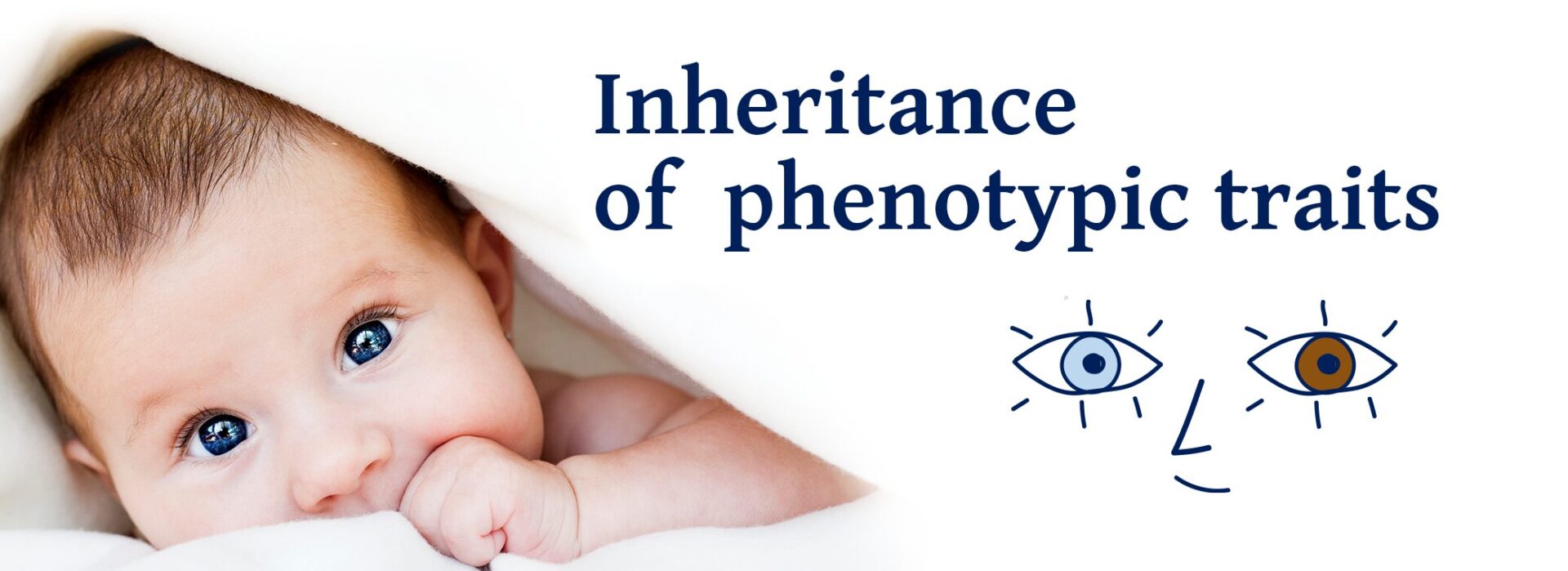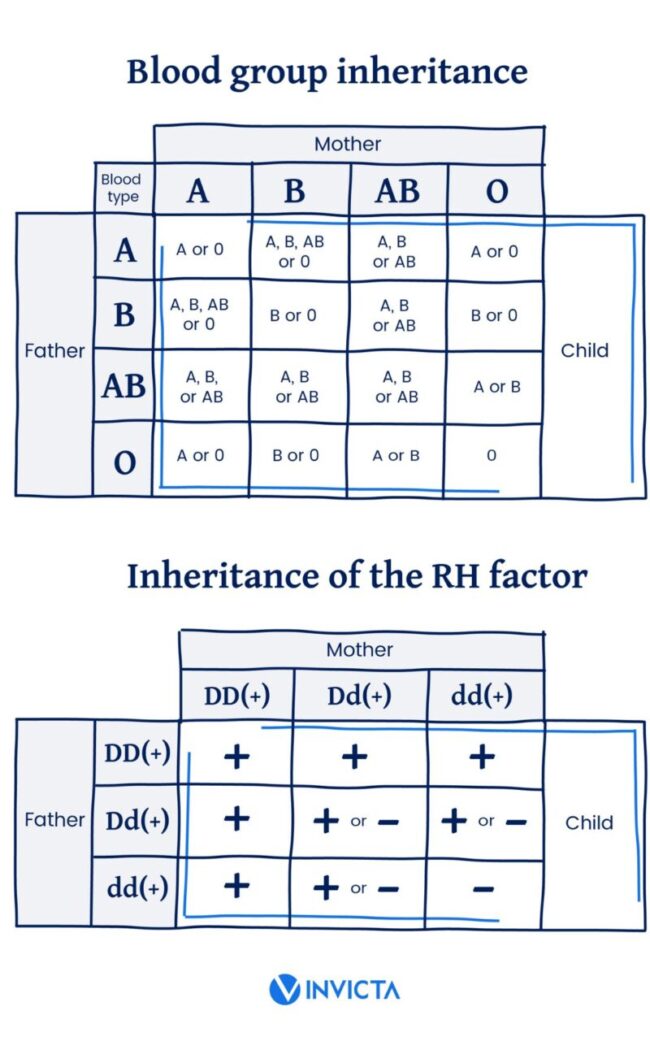: Artur Barczyk
Data aktualizacji: 18 July 2024
Publish date: 1 March 2024
: 18 min

One of the most crucial moments for patients undergoing in vitro fertilization treatment with gamete donation is the selection of an appropriate egg or sperm donor. This process may seem challenging, but in reality, it is not so complicated. Phenotypic traits compatibility plays a key role. And that’s what we’ll talk about today.
In the criteria for selecting donors based on phenotype, considerations include physical traits such as body build, height, hair colour, eye colour, and blood type. The aim of phenotypic matching is to achieve similarity between the child and the prospective parents. However, due to the numerous pool of traits and their variability, at the current stage of medical development, it is not possible to determine how a child will look and to what extent or in terms of which trait it will resemble the parents. The same applies to the degree of resemblance of a biological child to its biological parents.
In the Online Fertility Bank, utilizing precise phenotypic matching, you can independently choose an egg donor or sperm donor. The search mechanism is based on an algorithm developed by our .
Before we discuss the inheritance of phenotypic traits and whether the donor may have slightly different traits than the recipient patients, let’s start by explaining what phenotype actually is and what traits it includes.
The human phenotype is the collection of observable physical and morphological characteristics, such as eye colour, hair colour, skin tone, or blood type. It is a visual reflection of the human genotype – the set of genes of an individual that determine their inherited properties.
In the process of egg and sperm donation, the phenotypic traits of the donor are determined to maintain similarity between the parents and the child. That’s why the compatibility of these traits is an important criterion in the selection of donors.
So, what should we pay attention to? What should we consider? Let’s examine each category separately.
Contrary to appearances, blood type is not a very significant phenotypic trait to consider when choosing an egg donor or sperm donor. However, for a certain group of patients, it is important to ensure as much discretion as possible regarding such treatment. Therefore, when choosing a donor, we take into account the possibility of the child inheriting the blood group based on this trait in the recipient and their partner.
So, let’s start from the beginning. Blood grouping is determined by the presence or absence of specific antigens and antibodies. According to these parameters, we distinguish several systems within which specific groups are listed.
The two most commonly tested and significant systems are:
There are three alleles responsible for blood group in the ABO system: Ia, Ib, and i0. Alleles Ia and Ib are dominant, while i0 is recessive. Each person has two alleles determining their blood group – one from the mother and one from the father. Dominant alleles (as the name suggests) prevail over recessive alleles. This means that if a person has two alleles – dominant and recessive, their blood group will correspond to the dominant allele. Dominant alleles are equivalent to each other. According to this:
The way blood group inheritance works is illustrated in the table below:

We have discussed the principles of blood group inheritance in the ABO system. How does this process occur in the context of the Rh system?
The presence of the D antigen on red blood cells indicates blood group Rh+, and the allele determining the Rh+ blood group is dominant (D) over the allele (d) determining the Rh- blood group (lack of the D antigen on red blood cells). Remember that each parent passes one allele to the child. What does this mean?
If both parents have Rh+ blood group or if one parent has Rh+ and the other Rh-, the child may inherit either Rh+ or Rh-. However, if both parents have Rh- blood group, the child will also inherit Rh-.
This knowledge can help us avoid the risk of serological conflict. What is it? Serological conflict is directly related to the incompatibility of specific antigens present on the red blood cells of the mother and the child. Consequently, it can lead to the development of hemolytic disease of the fetus, which can pose a threat to its health and life. Due to the mechanism of specific antibody formation, serological conflict typically affects the second and each subsequent pregnancy. Currently, there are tests available and effective methods to prevent the development of serological conflict, so there is no need to worry too much about it.
As we mentioned earlier, blood type is one of the least significant phenotypic traits in donor selection. However, some patients pay strong attention to it. To choose the right donor, it all depends on the blood group of the recipient patients.
For example – if the mother has blood group A Rh+ and the father has blood group B Rh-, the child may be born with blood group: O Rh+, O Rh-, A Rh+, A Rh-, B Rh+, B Rh-, AB Rh+, or AB Rh-. Therefore, egg donors or sperm donors may have a different blood group than the recipient patients, considering the possibilities of inheriting this phenotypic trait.
The chromatic landscape of our appearance is defined by skin tone, hair colour, and eye colour. Their shades are determined by the amount of melanin – a pigment produced by melanosomes, organelles found in specialized cells called melanocytes.
There are two types of these organelles:
The colours and shades present in our appearance depend on the proportions of eumelanin and pheomelanin.
Let’s talk about eye colours

The vast array of possibilities associated with the diverse range of eye colours is extraordinary. Depending on classification, we know of anywhere from 16 to even 80 variants. But what influences the iris colour of a child?
A crucial role is played by the proportion of dark and light pigment, i.e., the types of melanocytes inherited from the parents, as well as any mutations they may have.
Iris colours can occur in numerous shades of blue, gray, green, hazel, brown, and black. When the recipient has green eyes and their partner has gray ones – due to the complex inheritance, the egg donor or sperm donor should have eyes that are blue, gray, green, or hazel.

Exceptional situations arise due to genetic changes, resulting in:
The proportions between eumelanin and pheomelanin – the dark and light pigments – determine the colour of our hair. The former ranges from brown to black, while the latter produces blond and red shades. The more saturated with pigments the hair is, the darker and more vivid its colour.
Several genes determine the type and amount of melanin in the hair, although little is known about most of them. The best-studied gene for hair colour in humans is called MC1R. This gene contains instructions for producing a protein called melanocortin 1 receptor (MC1R).
The melanocortin 1 receptor determines the type of melanin produced by melanocytes. When the receptor is activated, it triggers a series of chemical reactions inside melanocytes that stimulate the cells to produce eumelanin. If the receptor is not activated or is blocked, melanocytes produce pheomelanin instead of eumelanin.
This process is further modified by the action of other genes. Most people have two functional copies of the MC1R gene, one inherited from each parent. These individuals have black or brown hair due to a high amount of eumelanin. It is estimated that over 90% of people worldwide have brown or black hair.
Until recently, it was believed that the MCR1 gene located on chromosome 16 was responsible for red hair colour and was inherited from both parents. However, it turns out that this is not entirely true.
Research conducted by geneticists from the Roslin Institute (University of Edinburgh) has shown that a person with the MCR1 gene, who has red hair, passes this gene on to their children. However, if the carrier of the MCR1 gene has hair of a colour other than red, their children have a 50% chance of having natural red hair. If both parents with the MCR1 gene do not have red hair, this chance decreases to 25%.
Hair colour is a phenotypic trait that encompasses many different shades. In the INVICTA Fertility Bank, we identify basic and most common colours: light blond, dark blond, brown, black, chestnut, and red. When both recipients have the same hair colour, the egg donor or sperm donor should have a similar shade.

Hair texture in terms of its curl is another phenotypic trait that recipients pay attention to. What determines whether our hair will be straight, wavy, or curly?
Researchers distinguish several regions in the human genome directly related to hair structure. These regions contain genes responsible for producing proteins defining, among other things, the curl. This is an inherited trait, so if both parents have curly hair, their children’s heads will also be covered in curls. However, it’s essential to remember that the inheritance process doesn’t always proceed so straightforwardly because hair genetics are complex. Environmental factors also play a significant role in shaping hair appearance. Therefore, the hair structure of gamete donors is not such an important phenotypic trait.
In modern times, we are increasingly moving away from the division of human races, replacing it with the concept of ethnic groups. However, in medicine, we still operate with this term because it helps in selecting gamete donors and diagnosing diseases that are specific to particular races. The Polish population mainly belongs to the Caucasian white race (Europid). The white race also includes Spanish and Latino (Europe, South America, and parts of North America), as well as the Middle Eastern white race, or Arabs (Middle East).
As mentioned earlier, skin colour and tone (complexion) depend on melanin production, which affects colour differences. The complexion of people of the white race can be pale, pink-white, olive, or tanned (light brown).

If both parents are of the white race, they can choose an egg donor or sperm donor with pale, pink-white, or tanned skin. When it comes to selecting based on race, at least one of the recipient patients must have the same race as the chosen donor.
Does genetics influence phenotypic traits such as height and body type? Let’s start with height, which is to some extent a result of the height of both parents. However, it’s essential to remember that external conditions also play a role – especially diet and childhood illnesses and the associated medication intake (especially prolonged) and lack of physical activity. In such situations, children may not reach the height of their parents.
Is there a formula to calculate a child’s potential height? Yes. You should add the height of the father and mother (in centimeters), then subtract 13 (for a girl) or add 13 (for a boy), and divide the result by 2. Check if this applies in your case!
As for physique – let’s start by reminding ourselves of the types:
Physique depends on the BMI (Body Mass Index) value, i.e., the body mass index and height. It is calculated by the following formula – weight in kilograms divided by height in meters squared.
Environmental factors have a significant impact on a person’s physique, its proportions, and shape – especially when our BMI exceeds the upper or lower limit of the norm. It is essential to maintain this value at a healthy level – then, regardless of individual body build characteristics, everyone can feel great in their own body.
Due to the significant influence of external factors, traits such as height and body build are not crucial when choosing an egg donor or sperm donor.

Many prospective mothers preparing for in vitro fertilization with a donor egg wonder whether the child will resemble them at least a little or inherit something from them.
Due to the procedure, the child will receive genes from both the father and the anonymous egg donor – genetic material is inherited 50% from each side, while mitochondrial DNA is only found in the egg cell, not in sperm. Therefore, mitochondrial genes will be inherited from the donor.
However, it is essential to remember the significant influence of the prenatal period on the child’s development when the embryo develops in the mother’s womb. At this time, specific genes in the child’s DNA are activated.
Another important aspect is that the uterus is not just an incubator. Every cell of the developing fetus is built from the woman’s body. The mother’s endometrial tissue forms the placenta, which connects her to the child. The fetus actively utilizes the components of the mother’s blood – protein for muscle building, calcium for bone development, and glucose for energy. Every part of the child’s body is essentially created from the pregnant woman’s blood and bones. Therefore, it is the recipient who is the biological mother, and the child is her biological child.
